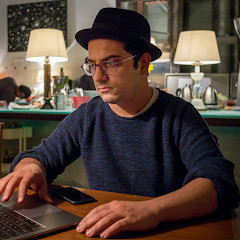Top Historical places in Shush, Iran
Top Rated Historical places in Shush
Top Reviewed Historical places in Shush
Reviews










Fascinating piece of history in a beautiful landscape. Walk inside the palaces of the achamenid empire!









1- one of best ancient Area in Iran
2- the museum is good .
3- best time to visit there is in winter .
4- Ancient castle is amazing when you understand its story about how it is built.
2- the museum is good .
3- best time to visit there is in winter .
4- Ancient castle is amazing when you understand its story about how it is built.












The Palace of Darius in Susa was a palace complex built at the site of Susa during the Achaemenid Empire. It is said that the construction was conducted parallel to that of Persepolis. So proud of visiting such historical places in my country although we faced a dusty weather during last minutes of our visit.








Shush Castle is located in the ruins of the ancient city of Shush. It was constructed by French archaeologist Jean-Marie Jacques de Morgan in the late 1890s, as a secure base for archaeological exploration and excavation. The Castle is similar to medieval monuments in France, but it has also been integrated from the Iranian architectural style. The structure was built by local craftsmen with bricks taken from two other archaeological sites, the Achaemenid Dariush castle and the Elamite Choqazanbil ziggurat, these bricks are between 3 to 7 thousand years old. It is built atop a hill which may contain other relics of past times.














This palace was constructed by Darius I during the Achaemenid Empire. Construction started some 450 years before Christ. The ground plan shows you how big this palace must have been and a few remaining capitals and columns give you an impression how beautiful this palace must have been.
The palace was excavated by French archeologists and most of the beautiful remainders have been transported to France. They are now located and can be seen in the Louvre in Paris.
The palace was excavated by French archeologists and most of the beautiful remainders have been transported to France. They are now located and can be seen in the Louvre in Paris.

Not much here as it has pretty much been depleted by De Morgan about 120 years ago. You can find most of its pieces in the Louvre. There is an impressive base of a column and half of a top of a column which is a bull's head here and that is all.

The only interesting note about this castle is that it was built using all of the bricks that were in and around the original Susa site of the Achaemenid Era. The bricks are of varying sizes and from different times as well. There are even some bricks with cuneform writing on them in the walls. This museum was built by De Morgan, which was the archaeologist for the site 120 years ago and took all of the artefacts to France.

















Book Description
The palace complex of the Persian King Darius I, the Great (522-486 BCE), provides unique evidence of the sophistication of Achaemenid architecture and construction. This palace, built 2500 years ago in western Iran, lay at the centre of the Persian Empire that stretched from the Nile and the Aegean to the Indus Valley. First rediscovered in 1851, the palace of Darius was partly excavated over the next century. But it was only field research between 1969 and 1979 by the noted French archaeologist Jean Perrot which revealed the site's full dimension and complexity. Its bull-headed capitals, enamel friezes of richly-clad archers holding spears, figures of noble lions and winged monsters, introduced a new iconography into the ancient Persian world. The discovery and excavation of the palace, which this book records, thus casts a new light on the beginnings of the Achaemenid period. Edited by the distinguished scholar of ancient Persia, John Curtis, the lavishly illustrated volume is a work of seminal importance for the understanding of ancient Persia, likely to be radically altered by Perrot's research and findings.
Editorial Reviews
'King Darius’ Palace at Susa is perhaps the least well known yet the most important of the Achaemenid Persian palaces, less perhaps for its remains on the ground than for its architecture and treasures which are to be seen in Teheran and notably in the Louvre. French exploration of Susa, which began in 1885/6, continues. This magisterial volume, the translation of the French edition of 2010, brings together at last a comprehensive account of the architectural remains and the finds, from various scholarly hands. It is a major resource and, with its lavish illustration, a joy to handle and read.' Sir John Boardman, FBA, Emeritus Lincoln Professor of Classical Art and Archaeology, University of Oxford
'This lavishly illustrated volume on Darius I’s palace at Susa is not only of utmost importance for the specialist in Near Eastern Archaeology. With its chapters on the history of Elam in Achaemenid times, and on the royal builder himself, it is also an indispensable tool for historians of Pre-Islamic Persia. Its comprehensive account of the French excavations provides key insights into European encounters with Iran as well into the history of scholarship.' Josef Wiesehöfer, Professor of Ancient History, Kiel University
'This sumptuous volume provides a richly illustrated, authoritative survey of the key structures and many individual objects found at Susa that can be said to have contributed so much to the advancement of Achaemenid studies, beginning in the second half of the nineteenth century. Above all, students of the evolution of early Achaemenid art and architecture will find this multi-authored volume to be essential reading.' David Stronach, OBE, Professor Emeritus of Near Eastern Archaeology, University of California, Berkeley
The palace complex of the Persian King Darius I, the Great (522-486 BCE), provides unique evidence of the sophistication of Achaemenid architecture and construction. This palace, built 2500 years ago in western Iran, lay at the centre of the Persian Empire that stretched from the Nile and the Aegean to the Indus Valley. First rediscovered in 1851, the palace of Darius was partly excavated over the next century. But it was only field research between 1969 and 1979 by the noted French archaeologist Jean Perrot which revealed the site's full dimension and complexity. Its bull-headed capitals, enamel friezes of richly-clad archers holding spears, figures of noble lions and winged monsters, introduced a new iconography into the ancient Persian world. The discovery and excavation of the palace, which this book records, thus casts a new light on the beginnings of the Achaemenid period. Edited by the distinguished scholar of ancient Persia, John Curtis, the lavishly illustrated volume is a work of seminal importance for the understanding of ancient Persia, likely to be radically altered by Perrot's research and findings.
Editorial Reviews
'King Darius’ Palace at Susa is perhaps the least well known yet the most important of the Achaemenid Persian palaces, less perhaps for its remains on the ground than for its architecture and treasures which are to be seen in Teheran and notably in the Louvre. French exploration of Susa, which began in 1885/6, continues. This magisterial volume, the translation of the French edition of 2010, brings together at last a comprehensive account of the architectural remains and the finds, from various scholarly hands. It is a major resource and, with its lavish illustration, a joy to handle and read.' Sir John Boardman, FBA, Emeritus Lincoln Professor of Classical Art and Archaeology, University of Oxford
'This lavishly illustrated volume on Darius I’s palace at Susa is not only of utmost importance for the specialist in Near Eastern Archaeology. With its chapters on the history of Elam in Achaemenid times, and on the royal builder himself, it is also an indispensable tool for historians of Pre-Islamic Persia. Its comprehensive account of the French excavations provides key insights into European encounters with Iran as well into the history of scholarship.' Josef Wiesehöfer, Professor of Ancient History, Kiel University
'This sumptuous volume provides a richly illustrated, authoritative survey of the key structures and many individual objects found at Susa that can be said to have contributed so much to the advancement of Achaemenid studies, beginning in the second half of the nineteenth century. Above all, students of the evolution of early Achaemenid art and architecture will find this multi-authored volume to be essential reading.' David Stronach, OBE, Professor Emeritus of Near Eastern Archaeology, University of California, Berkeley




Pictuer from apadana and susa castle

If you're into seeing ruins you'd love this place, but if you're into seeing the ruins of an ancient castle turned into a castle by invading colonialists, you'd find this place depressing. Much of the castle remains have been taken out of Iran and on display at the Louvre. They were smuggled out from 1890s onwards during when French archeologist Jean-Marie Jacques de Morgan built the Château de Suse right next to the ancient ruins as a base for locating artifacts and remains.

There is not much to see at the archaeological site. Some pieces of columns. That's it. Not comparable with Persepolis which is quite impressive.
The museum has some nice artefacts in display, but all behind glass, making photography difficult. It's ridiculous that almost double the price of Persepolis is charged.
The museum has some nice artefacts in display, but all behind glass, making photography difficult. It's ridiculous that almost double the price of Persepolis is charged.

Susa is a cradle to mankind. Unfortunately the remains are very poor due to the clay structures. More or less the only place that is open to public is the remains of the achemanid palace. Who has already visited persepolis will recognise some similarities. But persepolis is much more impressive. The most impressive building is maybe the so called french castle.
But all in all a place worth visiting to get an idea of that culture
But all in all a place worth visiting to get an idea of that culture


Few things remain in the site except from many column foundations. The only notable building structure that catches the eyes of visitors is a 19th century French castle built in order to provide protection to archaeologists from local hostilities during that time. (It is a beautiful castle, but it should not be confused with the Apadana Palace and other earlier remains). Those French archaeologists took many treasures home, and many of them are now exhibited in Musée du Louvre in Paris. Despite that unfortunate episode, one can definitely imagine the former glory of the palace during the golden ages of successive Persian empires before the arrival of Arab conquerors in the seventh century.



Great and wonderful place

Shush. It's the ancient capital of the Persian empire. So, everyone who loves the dramatic history of Iran has to visit this place. It is situated between the main crossroads of the ancient world.
The atmosphere of Shush is very nice, very historic. Very little remains of Shush. Don't forget to see the remains of Darius's palace.
The atmosphere of Shush is very nice, very historic. Very little remains of Shush. Don't forget to see the remains of Darius's palace.

I have visited this city numerous times in the past and this structure is not a castle as it is believed by many. It is a fortress built at the end of 19th century (1897) by French government to house the French archeological team. The fortress was built in Middle Age European architectural style with adobe most of which was brought in from Elamit monument of Tchogha Zanbil nearby.
